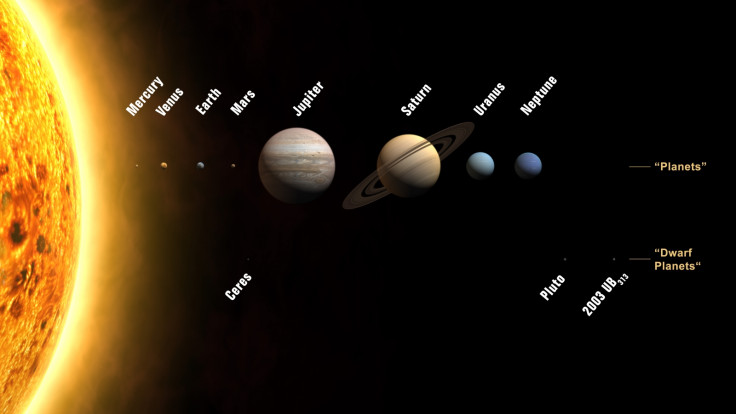'Wrecking ball' Jupiter swept early solar system clean and made way for Earth

Jupiter acted like a giant wrecking ball in the early solar system, destroying the first generation of planets closer to the sun before moving back to its current orbit, experts have said.
Researchers were looking at the scenario of how Jupiter and Saturn formed using the 'Grand Track' theory – where Jupiter first migrated towards the Sun until the formation of Saturn made it reverse course and migrate back out to where it currently resides.
Published in the Proceedings of the National Academy of Sciences, authors have now performed numerical calculations to find out what would happen if a set of rocky planets with orbits in the inner solar system had formed before Jupiter moved inwards.
Their findings – that Jupiter knocked them away like a giant bowling ball – would help explain the absence of planets with paths closer to the sun. Most other solar systems studied have fireball planets with orbital periods lasting just a few days.
Study co-author Gregory Laughlin, professor and chair of astronomy and astrophysics at UC Santa Cruz, said: "Now that we can look at our own solar system in the context of all these other planetary systems, one of the most interesting features is the absence of planets inside the orbit of Mercury.
"The standard issue planetary system in our galaxy seems to be a set of super-Earths with alarmingly short orbital periods. Our solar system is looking increasingly like an oddball."

Researchers said Jupiter moving inwards could have set off a chain reaction that led to the destruction of planets, asteroids and planetesimals: "It's the same thing we worry about if satellites were to be destroyed in low-Earth orbit. Their fragments would start smashing into other satellites and you'd risk a chain reaction of collisions. Our work indicates that Jupiter would have created just such a collisional cascade in the inner solar system," Laughlin said.
The debris would have been pushed into the Sun, but any material left behind would then have gone on to form a second generation of inner planets -- Mercury, Venus, Earth, and Mars.
"There is a lot of evidence that supports the idea of Jupiter's inward and then outward migration, he said. "Our work looks at the consequences of that. Jupiter's 'Grand Tack' may well have been a 'Grand Attack' on the original inner solar system."
Giant planets like Jupiter are quite rare. When they do form, normally they migrate inwards and end up at an orbital distance about the same as Earth's. The formation of Saturn, however, pulled Jupiter back, allowing the four inner-most planets to form there instead.
Researchers concluded that stars harbouring giant planets with orbital periods of more than 100 days are unlikely to host multiple close-in planets, with any Earth-sized planets close in being uninhabitable.
"One of the predictions of our theory is that truly Earth-like planets, with solid surfaces and modest atmospheric pressures, are rare," Laughlin explained.
© Copyright IBTimes 2025. All rights reserved.






















